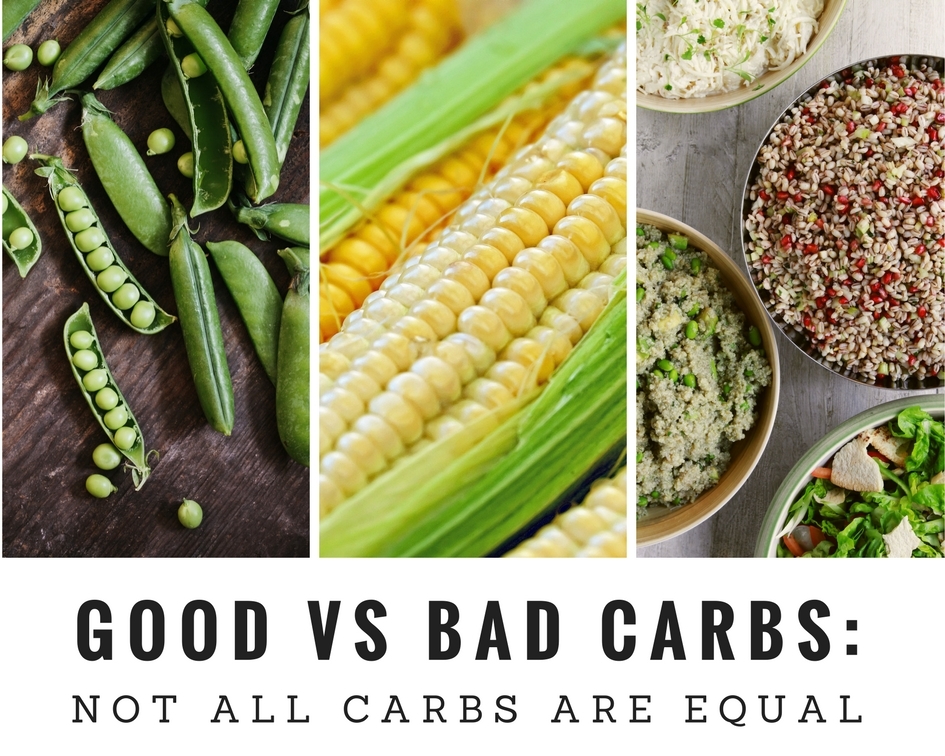Good carbs and bad carbs. Good Carbs vs. Bad Carbs: What’s the Difference?
What are the differences between good and bad carbs? How do they affect our health and what are the benefits of choosing healthy carbs? Get the facts.
Understanding the Difference Between Simple and Complex Carbohydrates
Carbohydrates are broadly classified into two categories: simple (or bad) carbs and complex (or good) carbs. Simple carbs, also known as refined or added carbs, are quickly digested and absorbed into the bloodstream, leading to spikes in blood sugar levels. These include white bread, pasta, pastries, and sugary drinks. In contrast, complex carbs are digested more slowly, providing a steady release of energy and keeping blood sugar levels stable. They are found in whole grains, fruits, vegetables, and legumes.
Fibers, Starches, and Sugars: The Three Types of Carbohydrates
Carbohydrates can be further broken down into three subcategories: fiber, starch, and sugar. Fiber is a complex carb that is not fully broken down during digestion, helping to promote digestive health and feelings of fullness. Starches are also complex carbs that provide sustained energy and essential nutrients. Sugars can be either natural (found in fruits and dairy) or added (in processed foods), and they are quickly absorbed, leading to blood sugar spikes.
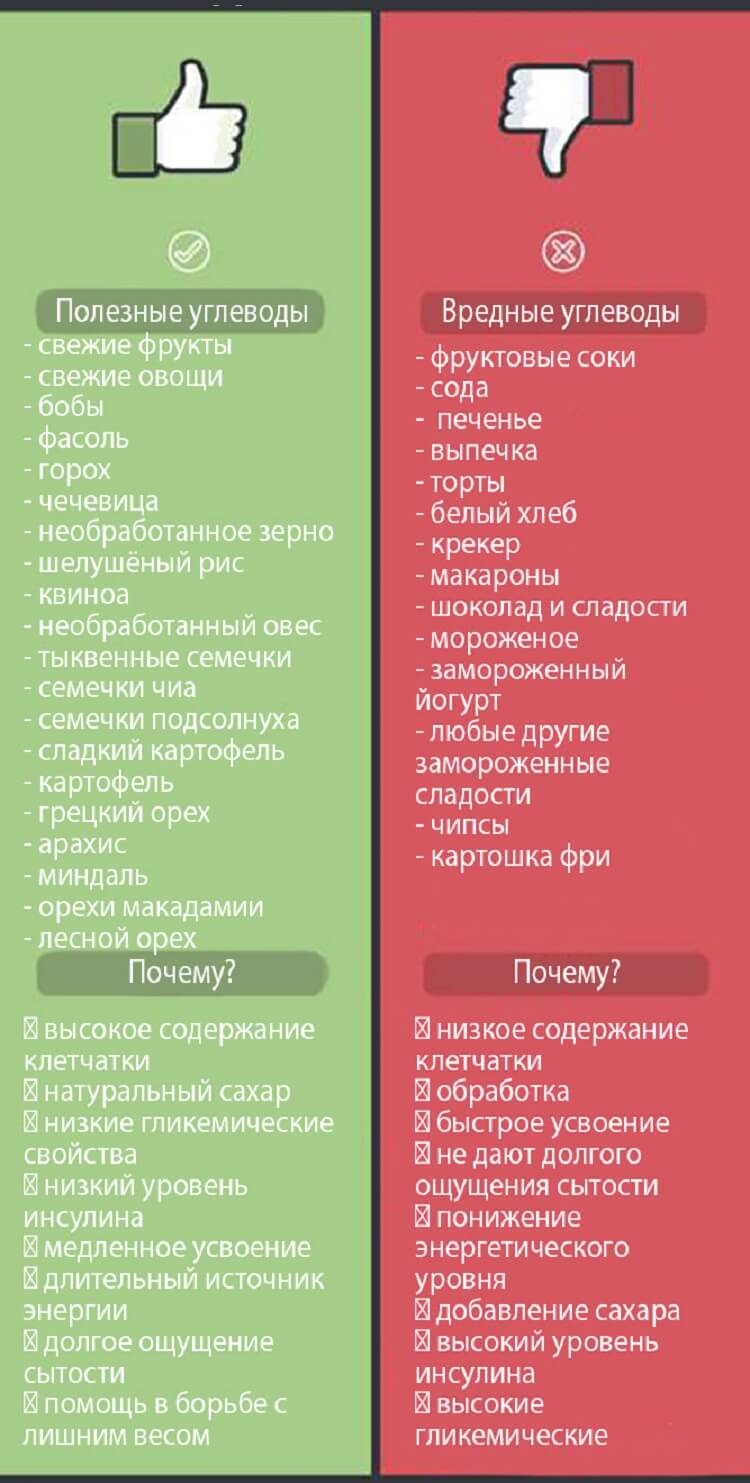
The Benefits of Choosing Healthy Carbohydrates
Consuming a diet rich in healthy, complex carbs offers numerous benefits. They provide fuel for vital organs and systems, such as the brain, heart, and digestive system. Complex carbs also help regulate blood sugar levels, reducing the risk of conditions like diabetes and heart disease. Additionally, the fiber in complex carbs promotes digestive health and feelings of fullness, which can aid in weight management.
How to Identify and Choose Healthy Carbohydrates
To ensure you’re getting the most nutritional value from your carbohydrates, look for whole, minimally processed options. Good sources of complex carbs include whole grains (such as quinoa, brown rice, and oats), fruits, vegetables, and legumes. When choosing breads, pastas, and cereals, opt for those made with whole grains rather than refined or enriched varieties. The Plate Method can also be a helpful guide, suggesting that half of your plate should be filled with fiber-rich, starch-free vegetables.
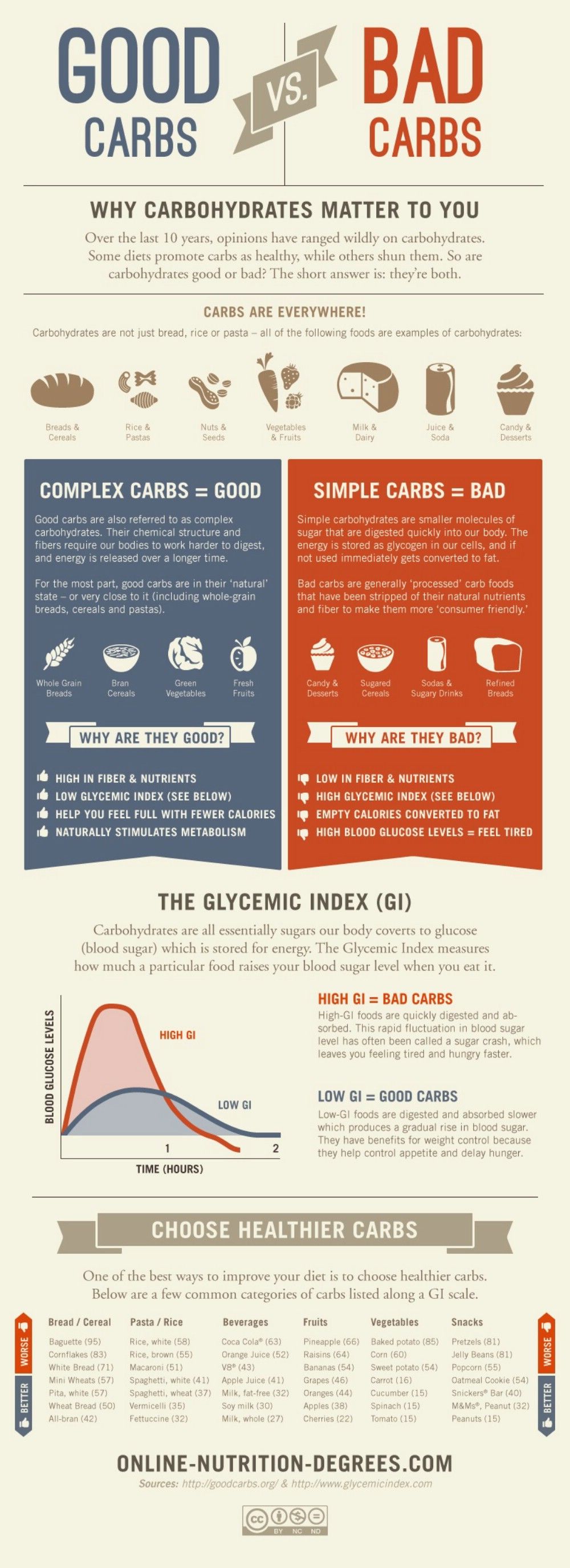
Replacing Bad Carbs with Good Carbs
Cutting out bad carbs can be challenging, but it’s important to find healthy replacements. Instead of soda, opt for sparkling water or unsweetened teas. Swap white bread for whole-grain alternatives, and choose whole-grain pasta or brown rice over refined versions. By making small, sustainable changes, you can gradually incorporate more complex carbs into your diet and enjoy the many benefits they provide.
The Consequences of Consuming Too Many Bad Carbs
Regularly consuming a diet high in simple, refined carbs can have negative health consequences. The sudden spikes and drops in blood sugar can lead to feelings of fatigue, headaches, and difficulty concentrating. Additionally, a diet heavy in bad carbs has been linked to an increased risk of obesity, type 2 diabetes, and heart disease.
What are the potential negative effects of a diet high in simple, refined carbs?
A diet high in simple, refined carbs can lead to a variety of negative health effects, including fatigue, headaches, difficulty concentrating, and an increased risk of obesity, type 2 diabetes, and heart disease. The sudden spikes and drops in blood sugar caused by these types of carbs can have detrimental impacts on the body.
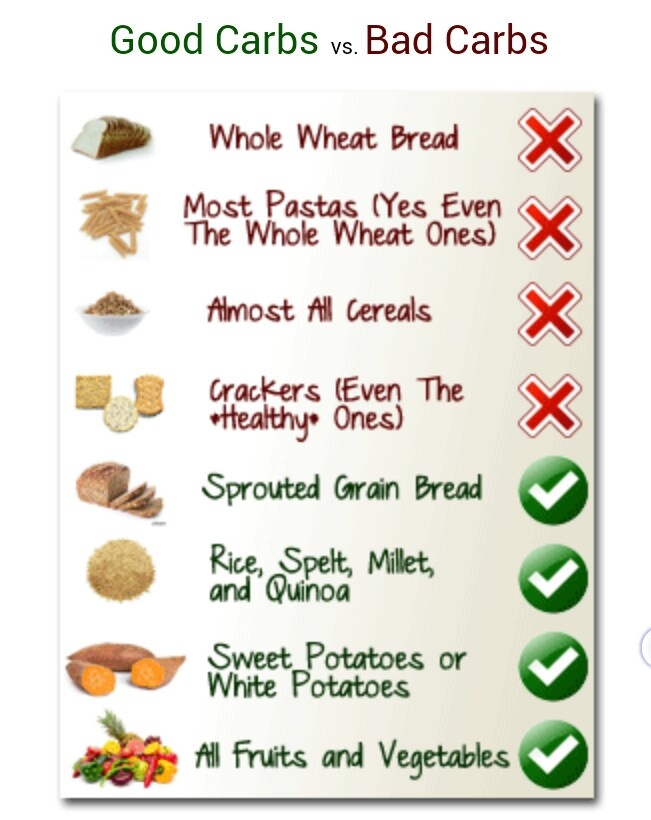
How can I identify and choose healthier carbohydrate options?
To identify and choose healthier carbohydrates, look for whole, minimally processed options such as whole grains, fruits, vegetables, and legumes. When selecting breads, pastas, and cereals, opt for those made with whole grains rather than refined or enriched varieties. The Plate Method can also be a useful guide, suggesting that half of your plate should be filled with fiber-rich, starch-free vegetables.
What are some tips for replacing bad carbs with good carbs in my diet?
Replacing bad carbs with good carbs can be a gradual process, but it’s an important step for improving your overall health. Some tips include swapping soda for sparkling water or unsweetened teas, choosing whole-grain bread instead of white bread, and selecting whole-grain pasta or brown rice over refined versions. By making small, sustainable changes, you can gradually incorporate more complex carbs into your diet and enjoy the many benefits they provide.

Good and Bad Carbs: What’s the Difference?
Written by WebMD Editorial Contributors
In this Article
- Simple and Complex Carbs
- Fibers, Starches, and Sugars
- Benefits of Healthy Carbs
- Choosing Healthy Carbs
Carbohydrates have a bad reputation. They tend to take the blame when people gain weight – but are they the true culprit?
It’s true, there are some bad carbs, but not all carbs are bad. Many carbs are important because they get turned into fuel for your body.
Carbohydrates are naturally found in plant-based foods, and these are typically good carbs. This type of carb is also called a complex carb, which promotes a healthy digestive system and metabolism.
Bad carbs are added to processed foods as starches and sugars, which have a variety of consequences. These are called simple carbs, which are absorbed into the bloodstream and become blood sugar.
Carbohydrates are broken down into two broad categories: simple and complex.
Simple carbs are the bad kind. These are carbohydrates that have many of their necessary nutrients removed. Simple carbs are digested quickly, causing spikes in blood sugar and making you feel hungry sooner. The short-lived fullness leads to overeating, weight gain, and conditions like diabetes and high blood pressure.
Popular foods with simple carbs include:
- White bread
- Enriched or refined pasta
- Enriched or refined dough
- Pastries
- White rice
Complex carbs are the good kind. They are often packed with nutritional layers like bran and fiber that make you digest them slower. Not digesting as fast also leads to a slow but steady release of glucose, preventing spikes in blood sugar.
Opting for a whole grain alternative to some of the above popular foods provides two major benefits. First, you get the same food but as a complex carb and with all the benefits that accompany it. Second, you are less likely to eat something processed that has a lot of added sugars.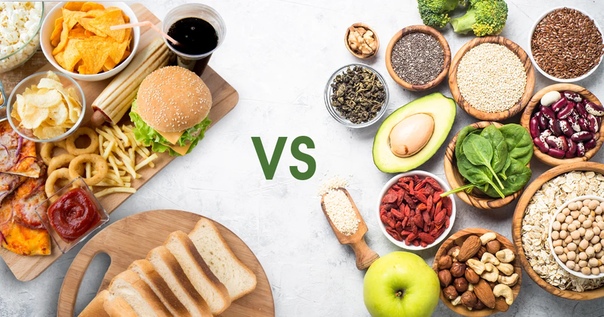
Carbohydrates are further broken into three more categories: fibers, starches, and sugars.
Fiber comes from plant-based foods. Fiber is a complex carb that isn’t completely broken down during digestion. Instead, it passes through your intestines and helps digest other nutrients. It also helps you feel full longer, preventing overeating.
Good sources of fiber include:
- Legumes such as lentils, beans, and peas
- Fruits and vegetables with edible skin or seeds
- Nuts and seeds
- Whole grains such as quinoa and oats
- Brown rice, pasta, and cereals made of whole grains
Starches are complex carbs. Starches function similarly to fiber. You digest them slower and they provide vitamins and minerals.
Starches are also found in many of the same foods:
- Legumes, primarily beans and peas
- Fruits
- Whole grains
- Vegetables, primarily corn and potatoes
Sugars come in two forms: natural and added. Natural and added sugars are simple carbs, which means they are processed by the body quickly. The sudden spike and subsequent quick drop in blood sugar is often known as a sugar crash.
Natural and added sugars are simple carbs, which means they are processed by the body quickly. The sudden spike and subsequent quick drop in blood sugar is often known as a sugar crash.
Your body can’t tell the difference between natural or added sugar. Consider this: eating a candy bar provides your body with sugar and not much else. Eating fruit still provides sugar, but it also supplies your body with important fibers and starches.
Added sugars might also be called:
- Dextrose
- Fructose
- Lactose
- Sucrose (table sugar)
- Beet sugar
- Honey
- Corn syrup
- Turbinado
- Agave
With all of this in mind, the benefits of healthy carbs become clear. Because carbs are fuel for your body, a lack of healthy carbs can have negative effects.
Carbs fuel several organs and systems, such as your:
- Brain
- Kidneys
- Heart muscles
- Central nervous system
- Digestive system
Fueling these organs strengthens them and prevents conditions such as diabetes and heart disease. Additionally, extra carbs are stored in your muscles and liver, so if you don’t get enough carbs later, your body still has stored up energy to use.
Additionally, extra carbs are stored in your muscles and liver, so if you don’t get enough carbs later, your body still has stored up energy to use.
A diet without enough carbs can lead to:
- Headaches
- Fatigue
- Weakness
- Lack of focus and difficulty concentrating
- Nausea
- Constipation
- Vitamin and mineral deficiencies
You don’t have to be a nutritionist or counting carbs to benefit from a diet of healthy carbohydrates.
The Plate Method is a powerful way to focus on healthy carbs. Half of your plate should be fiber-rich and starch-free vegetables. A quarter of the plate should be starchy foods, whether that’s vegetables like potatoes or a fruity dessert. The last quarter of the plate should be lean protein.
It can be difficult quitting bad carbs. Rather than cutting away pieces of your diet, find replacements for them. Instead of soda, try sparkling water. In place of white bread, opt for whole-grain bread. With a little bit of work, you can replace bad carbs with good carbs.
With a little bit of work, you can replace bad carbs with good carbs.
Top Picks
Good Carbs, Bad Carbs — How to Make the Right Choices
The amount of carbs we should consume is a highly debated topic. We need some carbs to function well, but they could also contribute to weight gain and other health conditions. Some carbs may be healthier for us than others.
The dietary guidelines suggest that we get about half of our calories from carbohydrates. On the other hand, some claim that carbs may lead to obesity and type 2 diabetes and that most people should limit them in their diets.
On the other hand, some claim that carbs may lead to obesity and type 2 diabetes and that most people should limit them in their diets.
While there are good arguments on both sides, there is no denying that our bodies need carbohydrates to work well. This article takes a detailed look at carbs, the difference between whole and refined crabs, their health effects, and how you can make the best choices for yourself.
What are carbs?
Carbs, or carbohydrates, are molecules that have carbon, hydrogen, and oxygen atoms.
In nutrition, the word “carbs” refers to one of the three macronutrients. The other two are protein and fat.
Dietary carbohydrates have three main categories:
- Sugars. These are sweet, short-chain carbohydrates found in foods. Examples are glucose, fructose, galactose, and sucrose.
- Starches. These are long chains of glucose molecules, which eventually get broken down into glucose in the digestive system.

- Fiber. Humans cannot digest fiber, but the bacteria in the digestive system can make use of some types. Plus, eating fiber is vital to your overall health.
One of the primary purposes of carbohydrates in our diet is to provide fuel for our bodies.
Most carbs get broken down or transformed into glucose, which can be used as energy. Carbs can also be turned into fat (stored energy) for later use.
Fiber is an exception. It doesn’t provide energy directly, but it does feed the friendly bacteria in the digestive system. These bacteria can use the fiber to produce fatty acids that some of our cells can use as energy.
Sugar alcohols are also classified as carbohydrates. They taste sweet but usually don’t provide many calories. They don’t tend to be nutritive.
Summary
Carbohydrates are one of the three macronutrients. The main types of dietary carbohydrates are sugars, starches, and fiber.
‘Whole’ vs. ‘refined’ carbs
‘refined’ carbs
Though there is a lot of information floating around about carbs, keep in mind that not all carbs are created equal.
There are many different types of carbohydrate-containing foods, and they can vary in their health effects.
Carbs are sometimes referred to as “simple” versus “complex” or “whole” versus “refined.”
Whole carbs are minimally processed and contain the fiber found naturally in the food, while refined carbs have been processed more and have had the natural fiber removed or changed.
Examples of whole carbs include:
- vegetables
- quinoa
- barley
- legumes
- potatoes
- whole grains
- oats
- beans
On the other hand, refined carbs include:
- sugar-sweetened beverages
- white bread
- pastries
- other items made with white flour
Numerous studies show that refined carbohydrate consumption is associated with health conditions like obesity and type 2 diabetes (1, 2, 3).
Refined carbohydrates tend to cause spikes in blood sugar levels, which can lead to a subsequent crash that can trigger hunger and lead to food cravings (4, 5).
They’re usually also lacking in many essential nutrients. In other words, they’re “empty” calories.
There are also added sugars, which should be limited as diets high in added sugars are linked to an increased risk of many different chronic diseases (6, 7, 8, 9).
While it is important to limit refined carbs and added sugars, whole carbs should be a part of a balanced diet.
Whole food sources of carbohydrates are loaded with nutrients and fiber and don’t cause the same spikes and dips in blood sugar levels.
Numerous studies on high fiber carbohydrates, including vegetables, fruits, legumes, and whole grains, show that eating them is linked to improved metabolic health and a lower risk of disease (10, 11, 12, 13, 14).
Summary
Not all carbs are created equal. Refined carbs are linked to obesity and metabolic diseases, but whole carbohydrates, which are minimally processed, have many health benefits.
Low carb diet conundrum
No discussion about carbs is complete without mentioning low carb diets.
These types of diets restrict carbohydrates while allowing plenty of protein and fat.
Though there are studies that indicate that low carb diets can help you lose weight, research tends to focus on those who have obesity, metabolic syndrome, and/or type 2 diabetes.
Some of these studies show that low carb diets can promote weight loss and lead to improvements in various health markers, including HDL “good” cholesterol, blood sugar, blood pressure, and others when compared with the standard “low fat” diet (15, 16, 17, 18, 19).
However, a review of more than 1,000 studies found that while there were positive outcomes with low carb diets less than and at 6–11 months, there wasn’t a significant effect on cardiovascular risk factors after 2 years (20).
Additionally, a National Health and Nutrition Examination Survey conducted from 1999–2010 that analyzed low carb diets and the risk of death found that those who ate the least amount of carbs tended to die prematurely from any cause, including stroke, cancer, and coronary heart disease (21, 22, 23).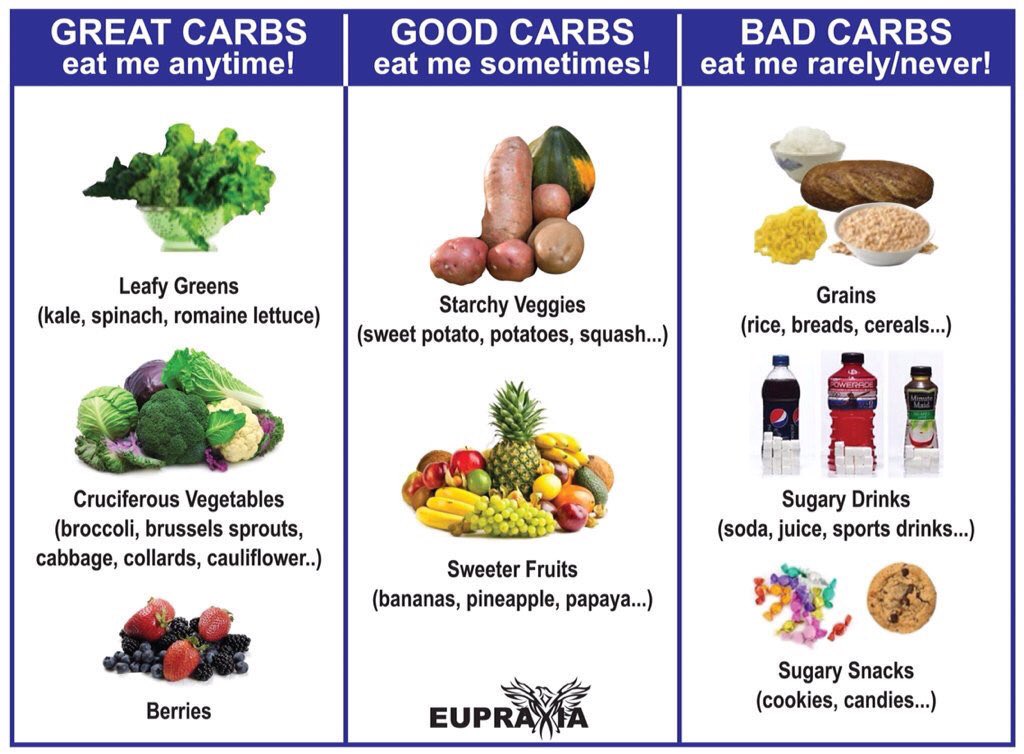
Summary
Just because low carb diets can be useful for weight loss for some individuals, they’re not the answer for everyone.
‘Carbs’ are not the cause of obesity
Though limiting your carbs can lead to weight loss, it doesn’t mean that eating carbs in and of itself is what caused weight gain in the first place.
This is actually a myth that’s been debunked.
While it’s true that added sugars and refined carbs are linked to an increased chance of developing obesity, the same is not true of fiber-rich, whole-food sources of carbohydrates.
In fact, humans have been eating carbs for thousands of years, in some form or another.
Yet the rate of developing obesity started growing around the mid-20th century with an uptick around 1980 when 4.8 percent of men and 7.9 percent of women had obesity.
Today, our numbers have increased exponentially and 42.4 percent of adults have obesity (24).
It’s also worth noting that some populations have remained in excellent health while eating a high carb diet.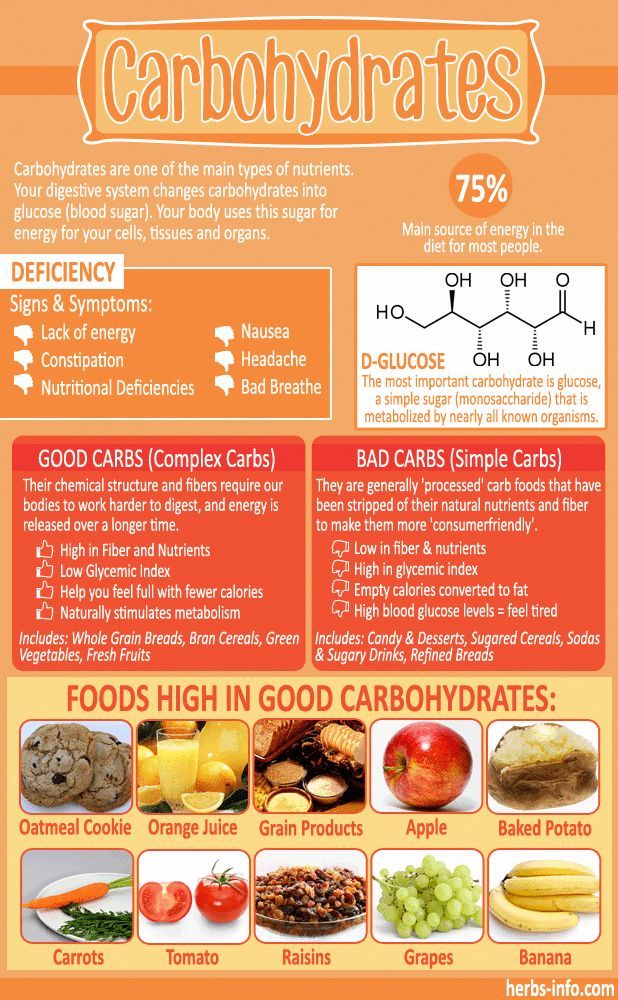
The Okinawan people and the Kitavan islanders, who consume a significant portion of their daily calorie intake from carbohydrates, have some of the longest lifespans (25).
What they have in common is they eat real, unprocessed foods.
However, populations that consume a large amount of refined carbohydrates and processed foods tend to have a higher chance of developing negative health outcomes.
Summary
Humans have been eating carbs long before the obesity epidemic, and there are many examples of populations that have remained in excellent health while eating diets high in carbs.
Carbs are not ‘essential,’ but many carb-containing foods are incredibly healthy
Many people following a low carb diet claim that carbs are not an essential nutrient.
This may be true to an extent, but they’re a critical component of a balanced diet.
Some believe that the brain doesn’t need the recommended 130 grams of carbohydrates per day.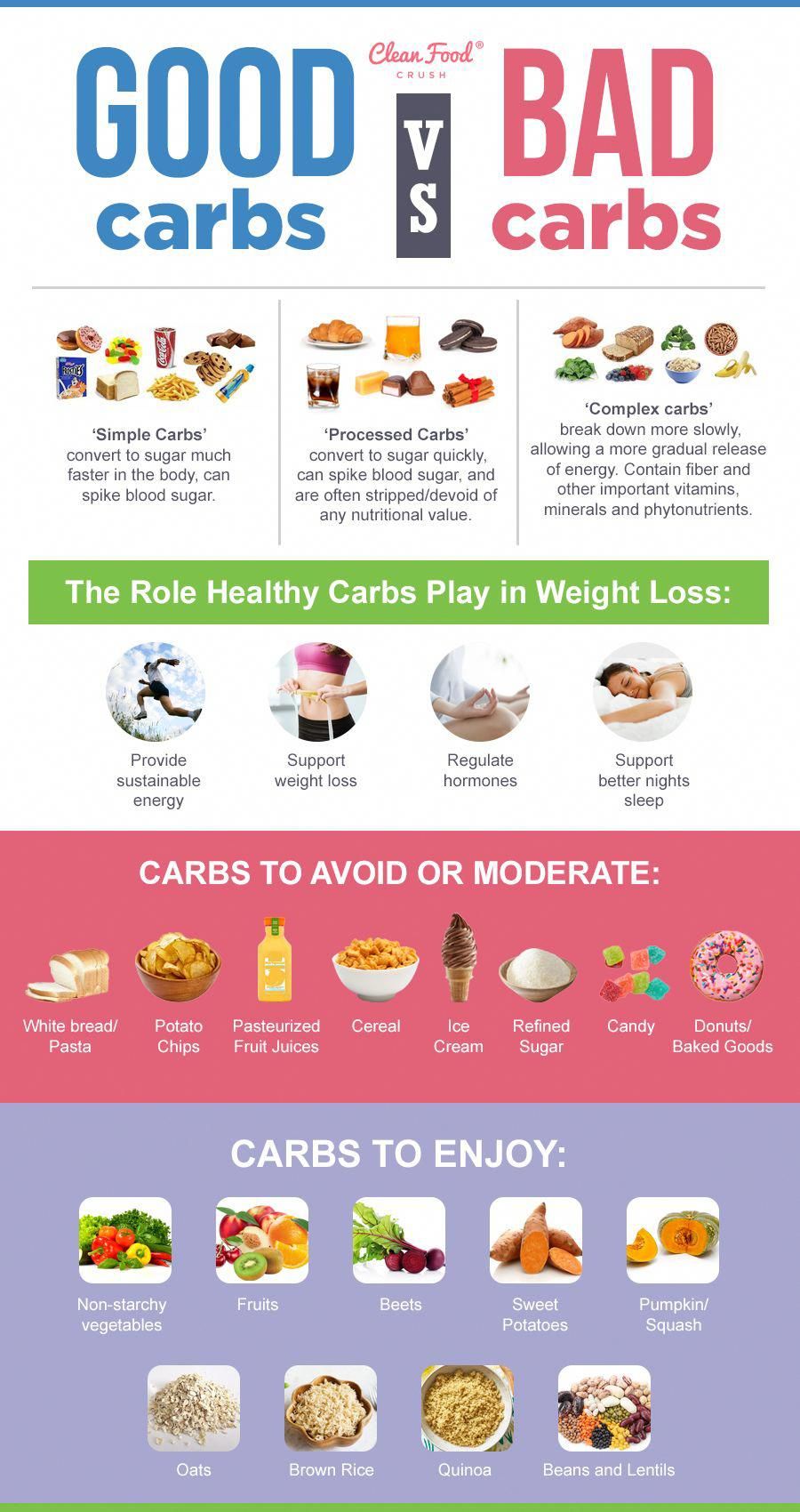 While some areas of the brain can use ketones, the brain relies on carbohydrates to provide its fuel (26, 27).
While some areas of the brain can use ketones, the brain relies on carbohydrates to provide its fuel (26, 27).
Furthermore, the nutrition carb-containing foods, such as vegetables and fruits, provide offer a variety of health benefits.
Although it’s possible to survive even on a zero-carb diet, it’s probably not an optimal choice because you’re missing out on plant foods that science has shown to be beneficial. Additionally, that extremely restrictive diet shouldn’t be something that is embarked upon without speaking with your doctor.
Summary
Carbohydrates are not an “essential” nutrient.
However, many carb-rich plant foods are loaded with beneficial nutrients, so avoiding them may not leave you feeling your best.
How to make the right choices
As a general rule, carbohydrates in their natural, fiber-rich form are healthy, while those stripped of their fiber are not.
If it’s a whole, single-ingredient food, then it’s probably a healthy food for most people, no matter what the carbohydrate content is.
Instead of thinking of carbs as either “good” or “bad,” focus on increasing whole and complex options over those that are heavily processed. It is better to focus on what you are gaining instead of what it feels like you may be giving up.
Things are rarely ever black and white in nutrition. But the following foods are a better source of carbs.
- Vegetables. All of them. It’s best to eat a variety of vegetables every day.
- Whole fruits. Apples, bananas, strawberries, etc.
- Legumes. Lentils, kidney beans, peas, etc.
- Nuts. Almonds, walnuts, hazelnuts, macadamia nuts, peanuts, etc.
- Seeds. Chia seeds and pumpkin seeds.
- Whole grains. Choose grains that are truly whole, as in pure oats, quinoa, brown rice, etc.
- Tubers. Potatoes, sweet potatoes, etc.
These foods may be acceptable in moderation for some people, but many will do best by limiting them as much as possible.
- Sugary drinks. These are sodas, fruit juices with added sugar, and beverages sweetened with high fructose corn syrup.
- White bread. These are refined carbohydrates that are low in essential nutrients and have a negative effect on metabolic health. This applies to most commercially available breads.
- Pastries, cookies and cakes. These foods tend to be very high in sugar and refined wheat.
- Ice cream. Most types of ice cream are very high in sugar, although there are exceptions.
- Candies and chocolates. If you’re going to eat chocolate, choose quality dark chocolate.
- French fries and potato chips. Whole potatoes are healthy. However, french fries and potato chips don’t provide the nutritional benefits that whole potatoes do.
Summary
Carbs in their natural, fiber-rich form are generally healthy.
Processed foods with sugar and refined carbs don’t provide the same nutritional benefits as carbs in their natural form and are more likely to lead to negative health outcomes.
Low carb is great for some, but others function best with plenty of carbs
There is no one-size-fits-all solution in nutrition.
The “optimal” carbohydrate intake depends on numerous factors, such as:
- age
- gender
- metabolic health
- physical activity
- food culture
- personal preference
If you’re overweight or have medical conditions such as metabolic syndrome and/or type 2 diabetes, you may be carbohydrate sensitive.
In this case, reducing carbohydrate intake is likely beneficial.
On the other hand, if you’re just trying to stay healthy, there’s probably no reason for you to avoid “carbs.” However, it’s still important to eat whole, single-ingredient foods as much as possible.
If your body type is naturally lean and/or you’re highly physically active, you may even function much better with plenty of carbs in your diet.
For more information about the amount of carbs that’s right for you, talk with your doctor.
Carbohydrates: a list of products for weight loss, the rate of consumption of proper carbohydrates
January 10, 2022
112 524
Julia Gorshkova
Nutrition coach, nutritionist. I love food and help others understand nutrition issues. I love it when more people stop being afraid of food and start eating varied and tasty.
I collaborate with projects: justfood healthy food delivery service, Neplacebo evidence-based medicine clinic, Mary’s Academy nutrition courses, Kale Coach well-being platform.
Content of Article
What are good and bad carbohydrates
Carbohydrates are important macronutrients for our body, the main source of energy. In order to benefit from them, you should know which products belong to them, how to take them into account in the daily diet, and what norm to rely on when losing weight.
By chemical composition, carbohydrates are divided into simple and complex sugars, or “bad” and “good”.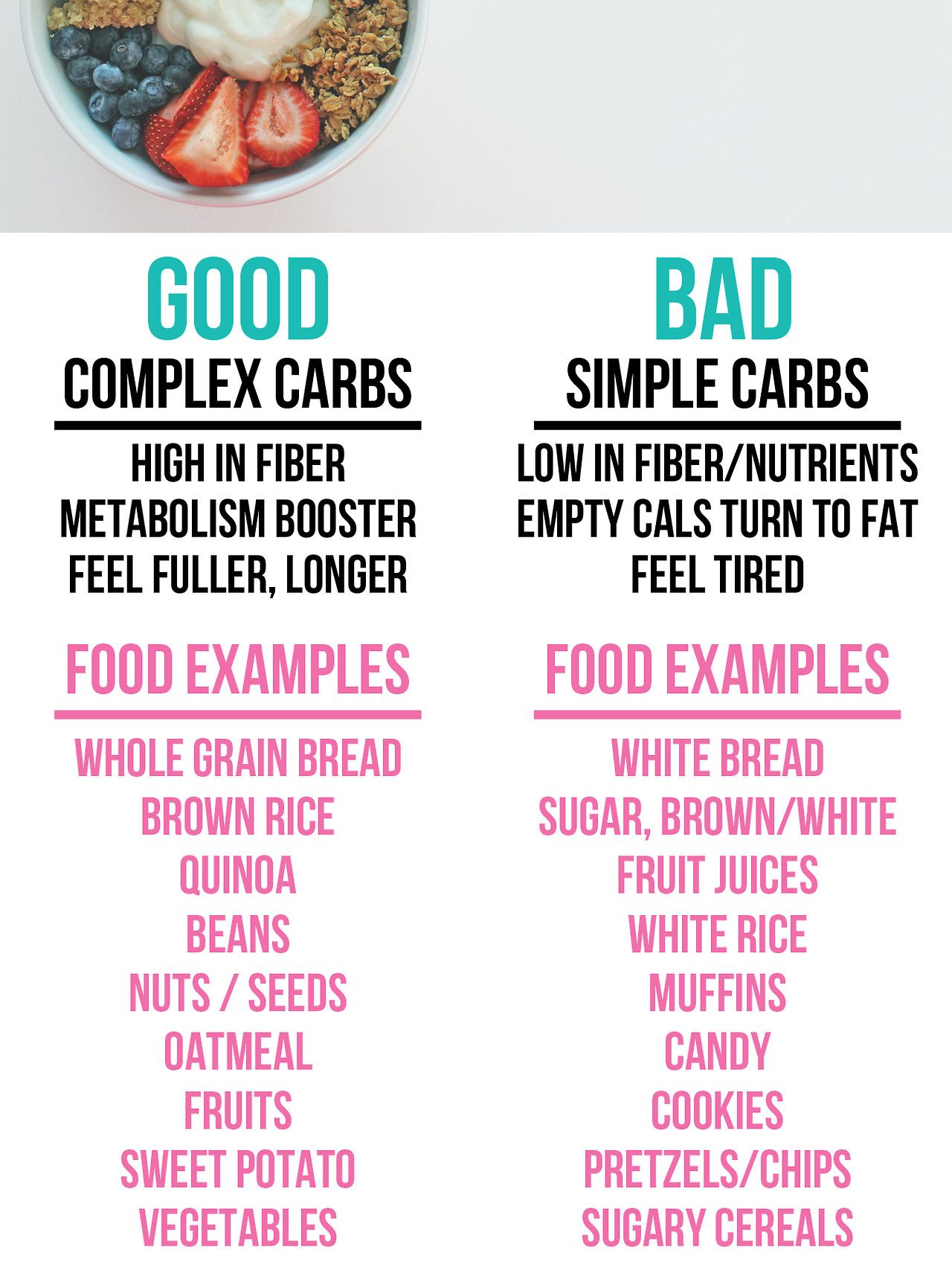 The main difference is that simple ones are quickly broken down, absorbed by the body and provide energy, complex ones take longer to break down.
The main difference is that simple ones are quickly broken down, absorbed by the body and provide energy, complex ones take longer to break down.
How and why it happens: simple carbohydrates have a simple composition (carbon and hydrogen). They are quickly broken down into fructose, glucose and galactose molecules and enter the blood just as quickly. Due to a sharp increase in sugar levels, a jump in insulin occurs. This immediately gives an energy boost, but it ends as quickly as it jumps, which is why they are called “bad” carbohydrates.
Simple carbohydrates are naturally found in foods such as fruits, milk and dairy products (lactose – milk sugar), sugar, syrups, sweets, sugary drinks, white flour products, white rice.
Complex carbohydrates, or polysaccharides, are starch, fiber, glycogen, pectin, inulin, and consist of several sugar molecules linked in long chains. Due to the more complex composition, and especially fiber, it takes the body more time to break down and absorb complex carbohydrates. But, unlike simple ones, they give more satiety and do not cause the same fluctuations in blood sugar.
But, unlike simple ones, they give more satiety and do not cause the same fluctuations in blood sugar.
A few more bonuses that fiber gives:
- ● it feeds our beneficial bacteria in the gut and helps maintain a healthy digestive tract and immunity in general;
- ● fiber binds to “bad” cholesterol and removes excess from the body.
Carbohydrates not only help maintain energy throughout the day, but also affect brain performance and are a source of many essential vitamins and minerals.
The brain requires about 20% of our total daily resting energy expenditure and its preferred energy source is glucose. We get it from carbohydrates, and for this it is not necessary to eat pure sugar or “charge” with sweets in the morning.
Proper Carbohydrates: Weight Loss Food List
There is a misconception that individual foods contribute to weight loss. But it’s not. We lose weight when we consume less energy than we expend. This does not mean that you need to give up high-calorie foods – they can be present in small quantities.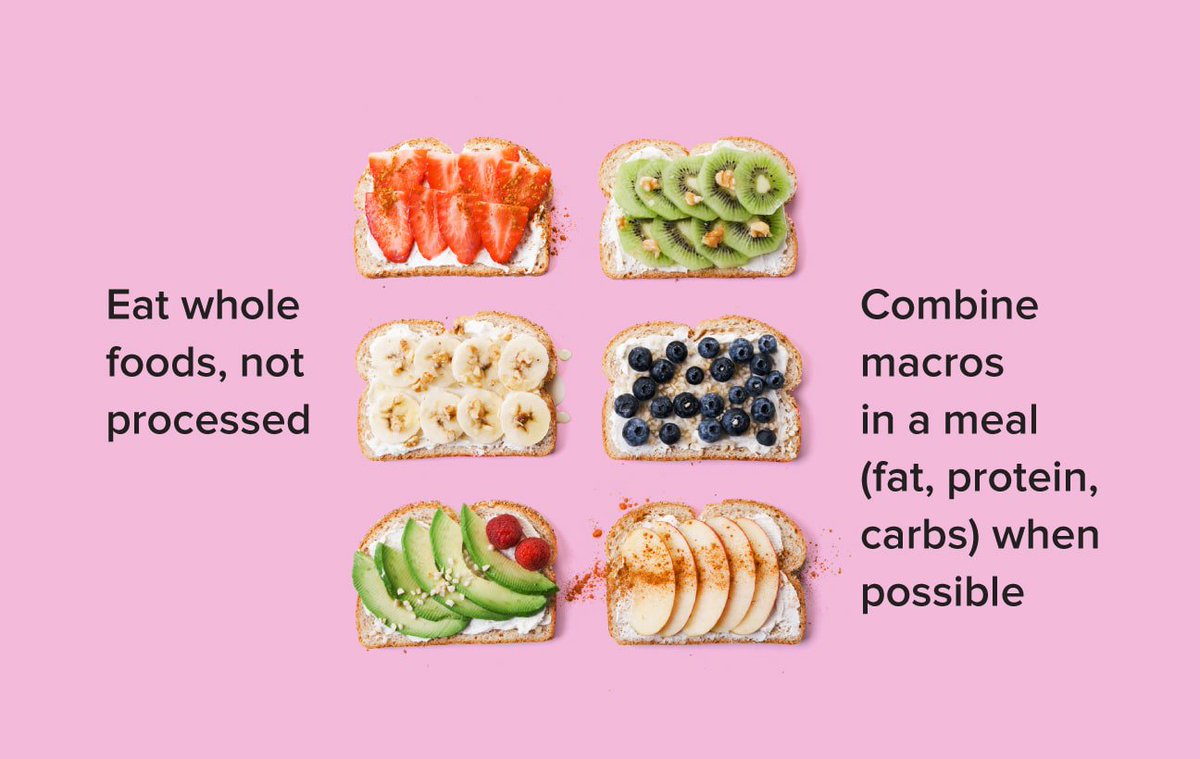 For example, any oil has a high calorie content. But we do not need a lot of fat – for this we can control their amount and consume in moderation.
For example, any oil has a high calorie content. But we do not need a lot of fat – for this we can control their amount and consume in moderation.
We can also make healthier choices—usually foods that give us a lot of benefits in addition to calories in the form of vitamins, minerals, and fiber—and eat enough of them and continue to lose weight. Among these products, there are many that we attribute specifically to carbohydrates.
In what foods can you find these “right” carbohydrates for weight loss?
Cereals, cereals and cereals
The maximum of healthy carbohydrates can be found in whole grain products: this is ordinary bread, but from wholemeal flour, and classic cereals (cereals or cereals). By the way: the value of all of the above will increase significantly if bran is added there.
At the same time, pasta can and should be included in the list of priority products containing complex carbohydrates. But even here we must pay close attention to the composition: for our purposes, it is better to give preference to pasta made from whole grain flour or legumes.
Even more care must be taken in choosing the right rice: with each stage of processing, it loses its value. Therefore, ideally, you should choose red, black or brown rice, but white contains few required substances and a lot of starch. Of course, we do not forget about the proven and reliable source of the carbohydrates we need – buckwheat, as well as barley and all existing types of legumes.
Gifts of nature from branches and beds
Have you ever thought about whether the color of a particular vegetable carries any information? But this criterion provides an unmistakable clue. For example, saturated green tells us about the presence of fiber in significant amounts. The presence of pectin, which is important for life, is signaled to us by fruits – the owners of a green peel. It is also found in various berries: the usual “inhabitants” of six acres gooseberries and black currants.
Do not hesitate to add cherries, cherries, corn and peas (if you like) to your diet.
Remember: the more colors, the better. You can use the principle of the rainbow – add a lot of colorful vegetables, herbs and fruits to your plate.
But with potatoes, you should be on the alert, as it is changeable in an interesting way: in direct proportion to the type of heat treatment, the properties of the carbohydrates contained in it change – baked or boiled in their uniforms will bring more benefits (and this is confirmed by professional nutritionists).
Nut seeds
Nuts can satisfy hunger for a while and even work for good: in certain varieties of nuts, there is a high concentration of oligo- and polysaccharide chains. However, you need to carefully monitor the amount consumed and be able to tell yourself “stop” after one handful of nuts.
If hunger caught you on the road – drink tea with a nut mixture as a snack (make sure in advance that there are no candied fruits or other sweet additions in it) or add fruit to the snack, bread rolls – a snack consisting of several components is much more satisfying.
Juices and dried fruits
Fruit and berry juices, fruit and vegetable smoothies and vegetable cocktails saturate our body with polysaccharides in full.
But do not rush to buy anything packaged: inside you will not find absolutely anything worthwhile. When squeezing juice and making smoothies, sugars are released, which means they are quickly absorbed and do not provide long-term energy. An exception may be tomato juice, but there is no complete certainty with it either – too much depends on the manufacturer, in addition, the method of its production remains a secret behind seven seals.
Dried fruits are a good and high-quality source of complex carbohydrates, but you should not overdo it: the downside of the drying process is a decrease in the size of the fruit, a decrease in its mass and, as a result, an increase in the concentration of sugar and calories per 100 g. Remember that one serving of dried fruits equal to 30 g. When cooking dried fruit compote, keep in mind that added sugar also carries additional calories, so you should not sweeten it.
Carbs per day for weight loss
Current recommendations suggest getting 45-65% of calories per day from carbohydrates. This amount includes grains, pasta, potatoes, fruits, vegetables, legumes, nuts, and seeds. This will provide an ideal alignment: on the one hand, the body will not experience a deficiency of glucose, but at the same time it will get a chance to restore the glycogen stores spent during the day in the muscles and liver cells. At the same time, fat does not accumulate (if eaten in moderation).
Calculating on your own, without the help of special applications, how many carbohydrates you get per day from all products is difficult and not everyone needs it. So there are better ways.
For convenience, we include cereals, cereals, potatoes, pasta and all their derivatives as the carbohydrate part of the diet.
On the day we should consume at least half of the daily norm of cereals in the form of whole grains – these are those that have not been processed to remove the grain shell, bran. To lose weight, it is not necessary to weigh every serving and carry a scale with you to work. To control portion size and account for carbohydrates, you can use the “plate rule”:
To lose weight, it is not necessary to weigh every serving and carry a scale with you to work. To control portion size and account for carbohydrates, you can use the “plate rule”:
- ● divide the plate in half and put vegetables on one half;
- ● Divide the second plate in half between protein-rich foods and carbohydrates. So carbohydrates will take up a quarter of the plate.
It turns out that at each meal we can confidently and without fear eat a small portion of carbohydrates – we just fill a quarter of the plate with them.
Another option that helps keep your carbs in check while losing weight is the palm method, where a handful = one serving of carbs. It is convenient because the hand is always with us and does not change in size.
These rules help you eat healthy food and plan your diet correctly when you want to lose weight.
What carbohydrates should be eliminated in order to lose weight
Now it is clear what carbohydrates you need to add to your diet and in what quantity.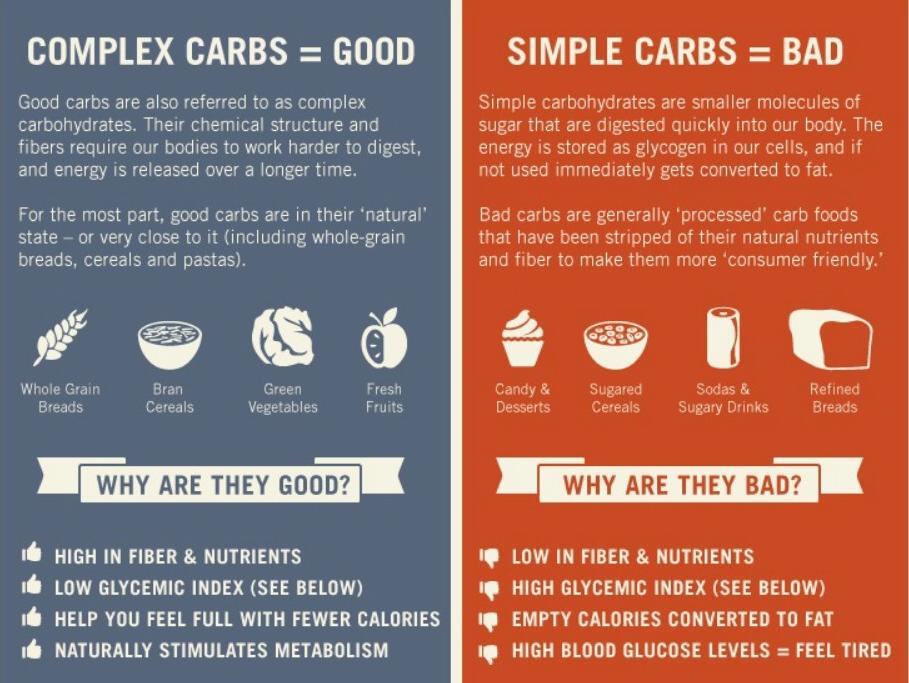 But there are also “fast” carbohydrates, which in excess can have a bad effect on the numbers on the scales and waist size.
But there are also “fast” carbohydrates, which in excess can have a bad effect on the numbers on the scales and waist size.
Here are examples of “wrong” carbohydrates that should be limited:
- ● sugar and sweets;
- ● sweet drinks;
- ● alcohol.
Their main benefit is pleasure, pleasant emotions and quick energy, but this does not last long. Therefore, resorting to them regularly for a short effect is still not worth it.
Do I need to eliminate them in order to lose weight?
It is difficult to do without the “wrong” carbohydrates, especially if sometimes you still want to enjoy your favorite cake or bake something delicious for the holiday. To reduce weight, they are not recommended to be excluded and classified as a forbidden food – as you know, the forbidden fruit is sweet, and cravings for it can only intensify. For a sustainable result in weight loss, you can come up with your own rules for consuming sweets, for example:
- ● available on certain days — beginning with the letter “s” — on Wednesdays and Saturdays;
- ● eat every day (if you really want to), but a little bit: a couple of pieces of chocolate, a few cookies.

There are rules that nutritionists and nutritionists recommend to follow – they help to eat sweets in moderation:
- ● do not store stocks of sweets at home – there is a big chance to snack on them, and not a full-fledged balanced snack;
- ● bake sweet pastries at home — you can adjust the proportions yourself, add less sugar than suggested in the recipe, and choose healthier dessert options;
- ● think about snacks in advance and provide yourself with food or ready-made options that will help satisfy your hunger in time;
- ● Don’t ignore hunger signals and eat on time – ignoring hunger for a long time can lead to overeating, and sweets often “help” with this.
Summary: A balanced diet, meals for hunger, the lack of “sweet” stocks at home – this is what naturally limits the “bad” carbohydrates in the diet.
How to consume carbohydrates during training
With regular training, it is especially important to maintain your energy level – in this, as you remember from the information above, carbohydrates help us, especially slow ones.
How does the diet change on training days? Yes, especially not at all. You don’t need to specifically eat high-carb bars before them or urgently eat “coals” in the “carbohydrate window”. It is enough to eat a balanced meal 1-2 hours before training and 1-2 hours after – for regular workouts, this is the best way to provide yourself with energy before and replenish stocks after.
What else?
Remember that there are no harmful foods or foods that are particularly harmful. A healthy balanced diet allows for the presence of absolutely any food in the diet. To achieve your weight loss goals, it is important to maintain balance and listen to body signals – these are basic skills that help you eat healthy.
If you want to improve your diet, justfood specialists will consult and prepare nutrition programs for you with delivery throughout Moscow. Call or fill out the form on the website.
Difference Between Good Carbs and Bad Carbs
Good carbs are complex carbohydrates that provide more energy, are healthier, and are high in essential vitamins, minerals, and fiber. Bad carbs are simple carbohydrates that digest quickly and increase blood sugar levels and risk of chronic disease.
Bad carbs are simple carbohydrates that digest quickly and increase blood sugar levels and risk of chronic disease.
Carbohydrates are the body’s main source of energy. An adult should consume 45 to 65% of their calories from carbohydrates to avoid the risk of chronic disease and meet their daily nutritional needs. Carbs can be simple and complex carbs, or good carbs and bad carbs.
Contents
- Overview and Key Differences
- What are Good Carbs
- What are Bad Carbs
- Similarities Between Good Carbs and Bad Carbs 9015 9
- What is the difference between Good Carbs and Bad Carbs
- Conclusion
What are Good Carbohydrates?
Good carbohydrates refer to complex carbohydrates found in whole grains, vegetables, fruits and beans. Because they are complex, they take time to digest and release energy (energy release is slow in good carbohydrates).
Good carbohydrates
But they contain more energy, which is constantly released without any peaks in energy release levels. Therefore, these carbohydrates have a low risk of blood glucose spikes and they do not cause chronic disease.
Therefore, these carbohydrates have a low risk of blood glucose spikes and they do not cause chronic disease.
Good carbohydrates are the best sources of essential vitamins, minerals and fiber. They have a high nutrient content. They also help us keep our body weight in shape.
What are Bad Carbohydrates?
Bad carbohydrates are the simple carbohydrates in our diet. They are poor in nutrients. They are low in vitamins, minerals and fiber. Simple carbohydrates are quickly digested and quickly raise blood glucose levels. However, after that, there is a drop in energy production, which makes you hungry again and feel tired.
Bad carbs
Cane sugar, french fries, white bread, white rice, pasta, cakes, biscuits and processed juices are sources of bad carbohydrates. They can lead to weight gain.
What are the similarities between Good Carbs and Bad Carbs?
- Good and bad carbohydrates are carbohydrates made up of C, H and O atoms.
- Both types provide energy.

- Both contain nutrients.
What is the difference between Good Carbs and Bad Carbs?
| Good carbs vs. Bad carbs vitamins, minerals and fiber | Bad carbohydrates are simple carbohydrates that are digested quickly and increase blood sugar levels dramatically and reduce the risk of chronic disease | |
| Synonyms s | Also known as simple carbohydrates | |
| Absorption | ||
| Absorbed slowly into the digestive system | Absorbed quickly into the digestive system | |
| Contains fiber and fiber | ||
| Lots of fiber and fiber | Does not contain enough fiber | |
| 901 46 Blood sugar level | ||
| Maintain normal blood sugar level | Very increase sugar levels dramatically | |
| Health risk | ||
| Low risk of chronic disease | High risk of chronic diseases | |
| Vitamins and minerals | ||
| High in essential vitamins and minerals | Low in essential vitamins and minerals | |
| Energy content | ||
| Power source energy | Less powerful source of energy | |
| Hunger onset | ||
| Hunger does not occur for a long time | Hunger occurs after a short time | |
| Glycemic value | High glycemic value | |
| Effect on weight | ||
| Helps in weight loss | Cause of weight gain | |
| Sources | ||
Found in whole grains, fruits, vegetables, beans, etc.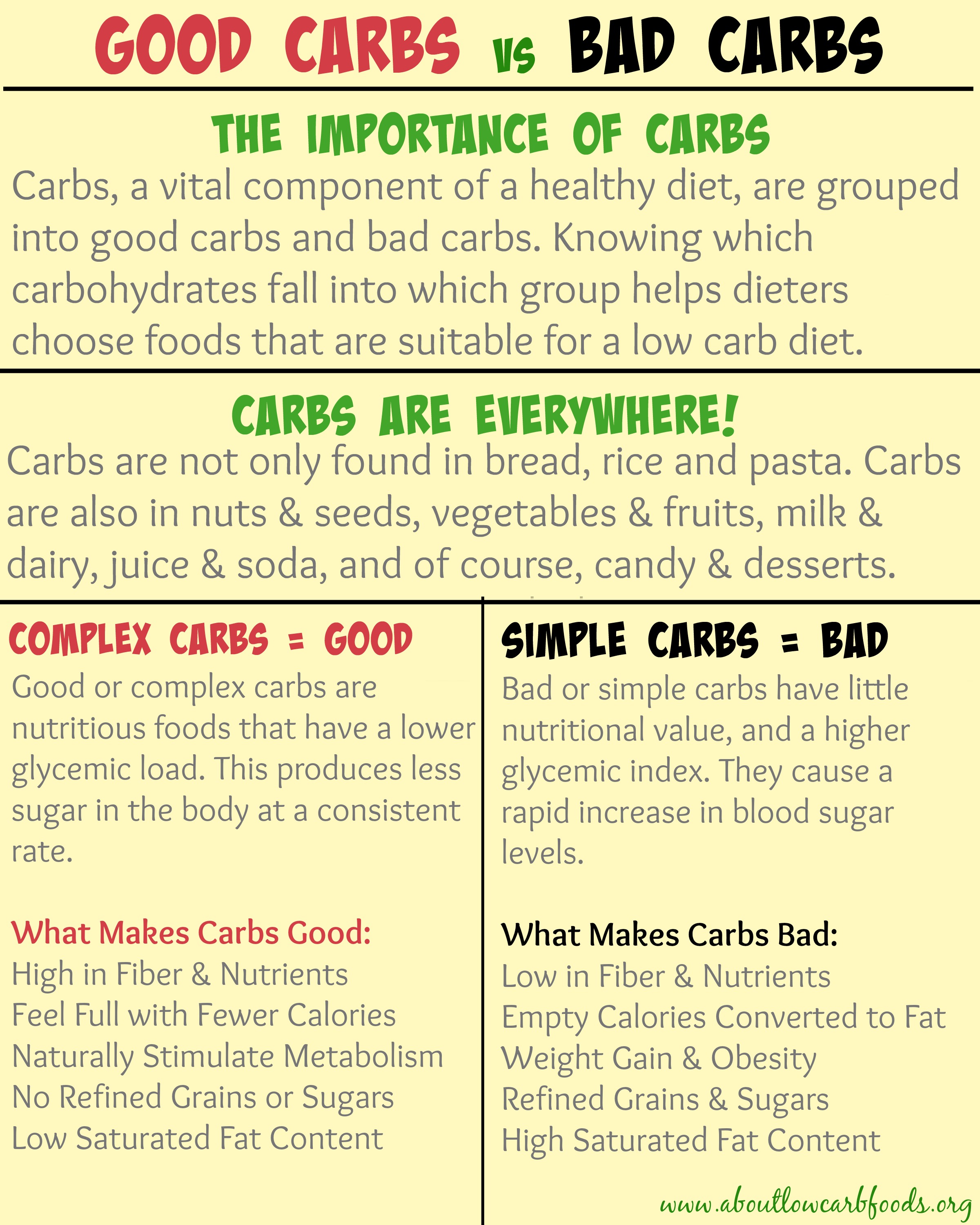 | ||


